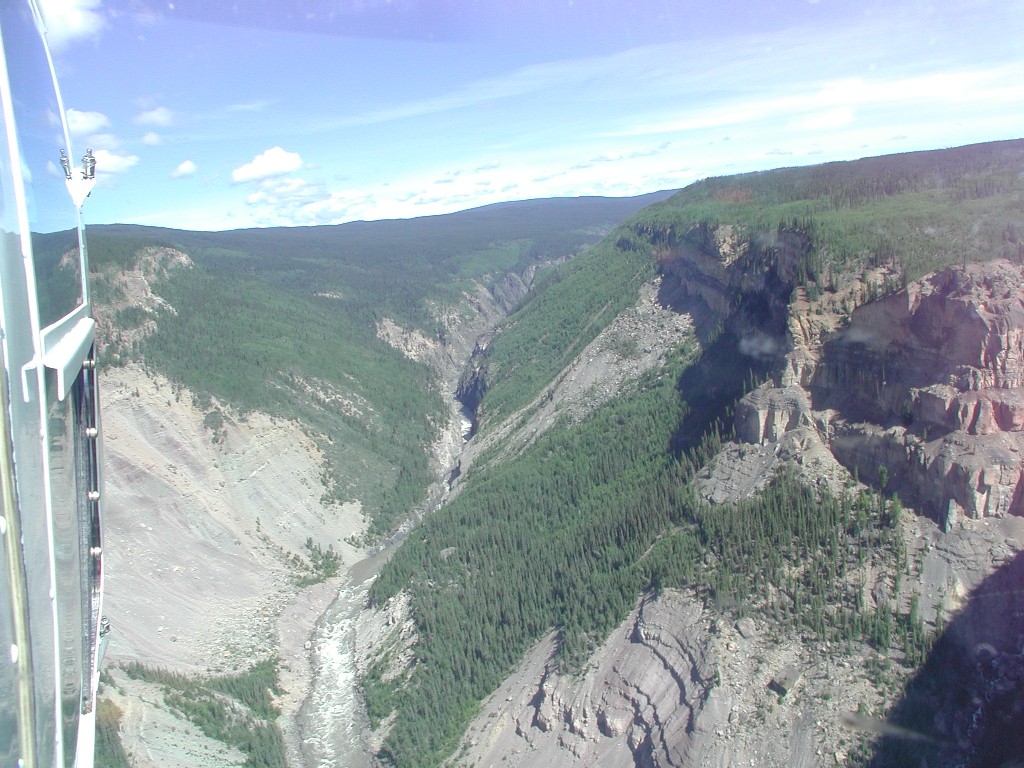University of Manitoba
Stikine
Project
Climate Change Impacts and Adaptations
How
will climate change
impact British Columbia’s far
north? In the area of interest (South Yukon, Stikine Watershed, Mount
Edziza), as well of most of British
Columbia is listed as
“sensitive” to future
climate changes. Note that Climate impacts and
adaptation research is only
just commencing in British
Columbia (Canada 2002). A key to
developing mitigation (or more likely
adaptation) strategies
is to understand how the temperatures
varied in the past, and how
ecosystems evolved to adapt to
those stresses.
interest in studying climate change through reconstructing ground surface temperatures (GST) from borehole measurements (BHT). Note that the magnitude of temperature increases reconstructed from BHT records seems to contrast however, with some proxy based reconstructions of surface air temperature (SAT) that indicate lower amounts of warming over the same period. We present data suggesting that seasonal snowcover may bias climate reconstructions based on BHT in portions of the Canadian northwest. Eight sites west of the Canadian cordillera, were examined for long-term SAT and GST changes. At seven of these sites precise borehole temperature profiles are used for the first time since the 1960s, thereby exploring the linkage between GST and SAT. New readings were made at
four of these locations. All sites showed significant increasing SAT trends, in terms of annual mean minimum and maximum temperatures. Over a 54 year period, the minimum temperatures increased between 1.1C and 1.5 while the maximum increased between 0.8 C and 1.5 C, among those eight stations. Observations of GST at those sites, however, showed no obvious climate induced perturbations. We believe this disconnect between SAT and GST is attributable to an increase in snow cover in early winter, followed by an increasing trend toward earlier snow melt in the
region. Such seasonal bias has important implications for GST reconstructions based on borehole temperatures. These results support Mann and Schmidt’s conjecture about a seasonal bias in the GST reconstructions fromborehole surveys and counter assertions of lower historic earth temperatures.
.
Stikine Valley Northern Canadian Location
The Stikine
River and the
Spatsizi plateau near Dease Lake,
B.C. has been selected for this study because of its importance in
mining, recreation, culture, fisheries,
and its unsurpassed beauty. Along with other conservation-minded
groups and individuals, ”Friends of the
Stikine” Society has been advocating
recognition and
protection of the Stikine River main stem as
part of a “management” strategy
to preserve the
integrity and natural balance of the
watershed. Although Mt. Edziza and Spatsizi Provincial Parks
contain large areas of the watershed at
higher elevations, the Stikine River and all of its tributary valley
bottoms remain vulnerable to these
aforementioned changes. The area
has been classified as
”sporadic, discontinuous” permafrost (NRCAN).
Old GSC borehole at
Buckley Lake
Grand Canyon of the Stikine
Existing in the Stikine River Provincial Park is a geological feature unparalleled in Canada. Eighty kilometers of steep-walled canyon, composed of sedimentary and volcanic rock, has been carved through eons of river erosion. In the bottom of this sometimes 300 m deep chasm flows the wild and un-navigable Stikine River, which varies in width from 200 m to as little as 2 m at a point near the Tanzilla and Stikine confluence. A resident population of more than 300 mountain goats resides in the canyon. Many other species frequent the area, including the black and grizzly bears,
Stone sheep, moose, caribou, wolf, coyotes, salmon, and numerous bird species.

